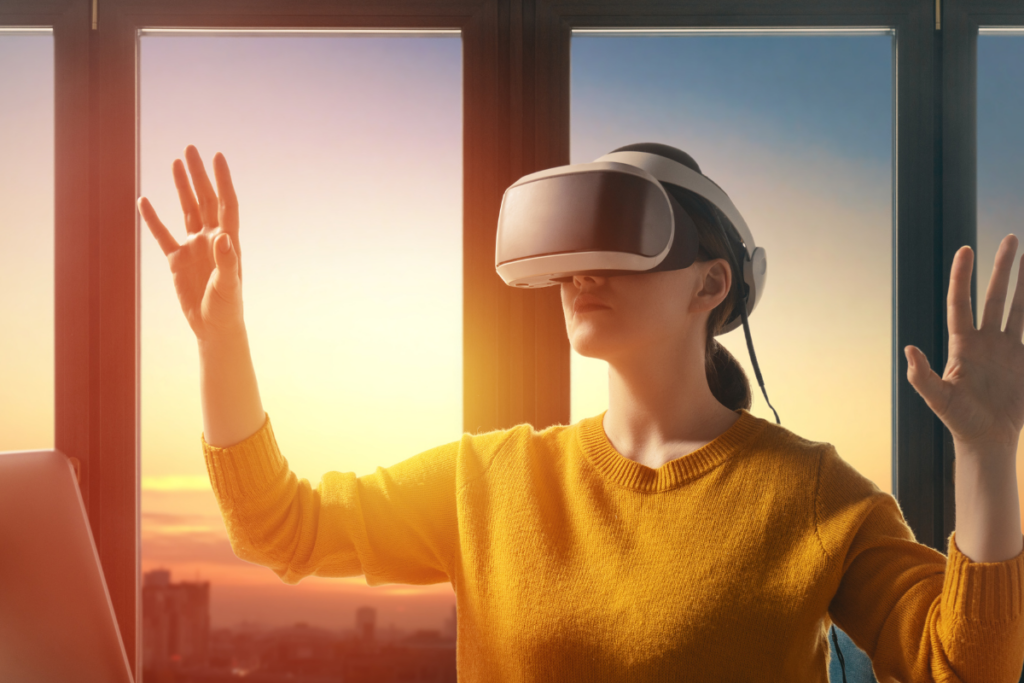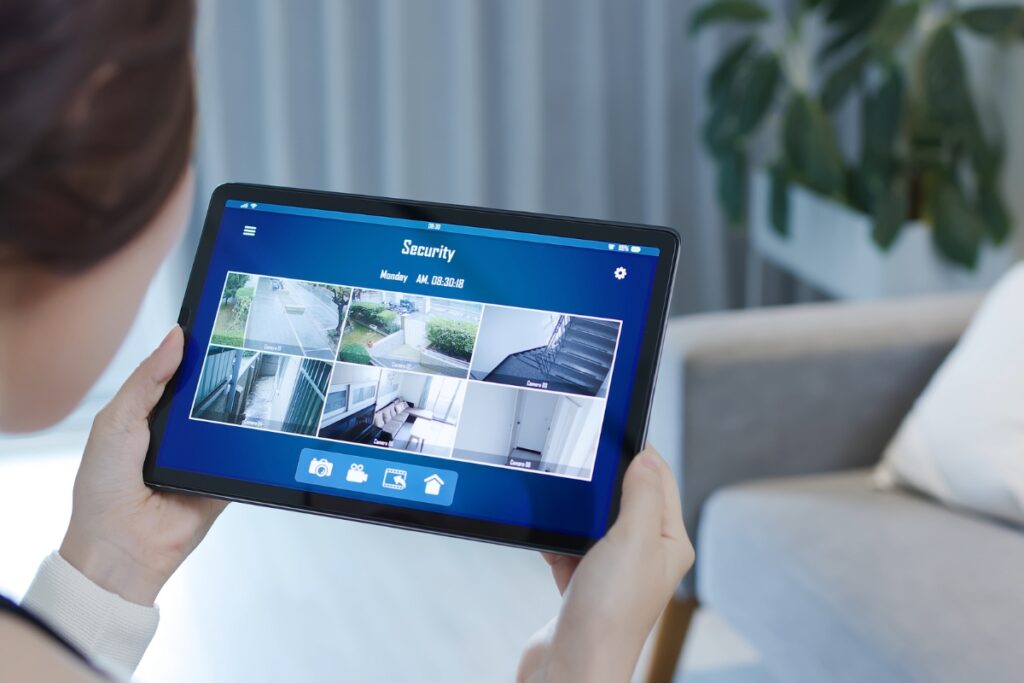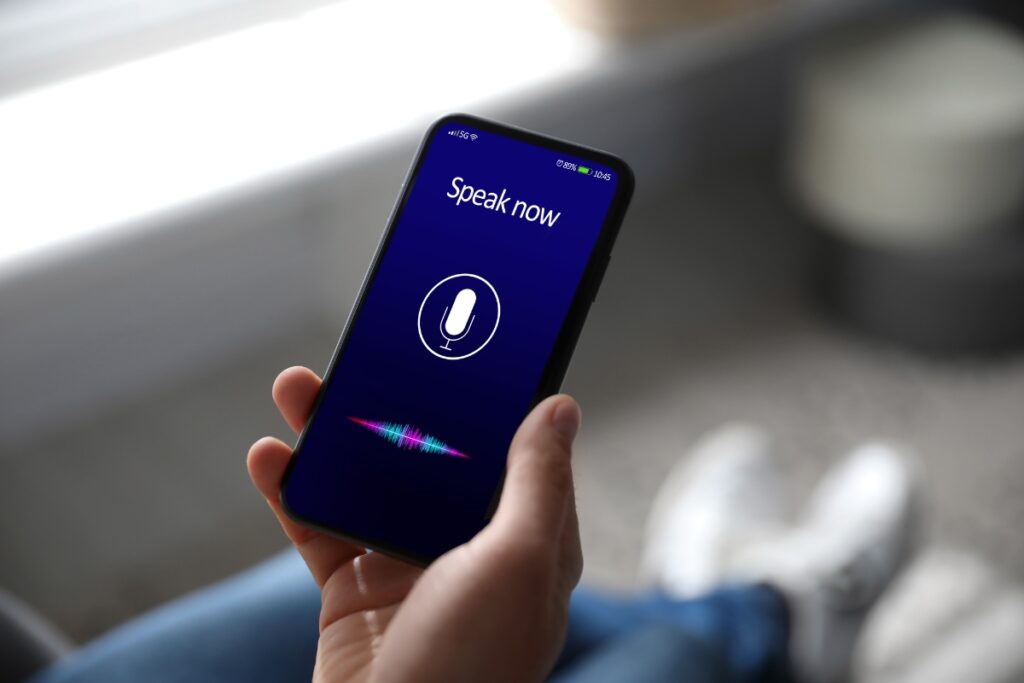In mobile app development, staying up to date on the latest emerging trends is very important for developers, businesses, and users alike. The current technological zeitgeist encompasses an array of innovations, each promising to reshape how we interact with our mobile devices and the digital space. From Augmented Reality (AR) and Artificial Intelligence (AI) to Internet of Things (IoT) apps and 5G technology, the possibilities seem boundless.
Let’s explore the top trends that are not only shaping but revolutionizing mobile app development.
Trend 1: Augmented Reality (AR) in Mobile Apps

Augmented Reality (AR) has swiftly transcended from a sci-fi concept to an integral part of our daily digital experiences. AR overlays digital elements onto the real-world environment through a device’s camera or screen[^1^]. Applications like Pokemon Go, Snapchat, and IKEA Place have become cultural phenomena, showcasing the potential of AR in enhancing user engagement and interactivity[^13^]. Integrating AR into mobile apps not only fosters user retention through novel experiences but also provides real-time, context-aware information.
However, AR app development is not without its challenges. Ensuring compatibility across diverse devices, safeguarding user privacy, and managing the balance between user expectations and technical limitations are crucial considerations. The transformative power of AR extends beyond entertainment; it holds promise in education, healthcare, retail, and entertainment, blurring the boundaries between reality and fantasy.
Trend 2: Artificial Intelligence (AI) & Machine Learning (ML) Integration

Artificial Intelligence (AI) and Machine Learning (ML) are not just buzzwords; they represent a paradigm shift in how mobile apps operate. AI, aiming to replicate human intelligence, coupled with ML, enabling machines to learn and improve from data, is reshaping user experiences. Apps like Netflix and Spotify leverage these technologies to provide personalized content recommendations and optimize user interactions.
AI and ML integration enhance user experience, decision-making, and operational efficiency. Smart and personalized features cater to user preferences, while actionable insights aid faster decision-making. However, challenges like data security, choosing appropriate models, and balancing performance and resource consumption are inherent in the development of these intelligent apps. Industries like finance, healthcare, education, and entertainment stand to benefit significantly from the transformative potential of AI and ML.
Trend 3: Internet of Things (IoT) Apps

The Internet of Things (IoT) is revolutionizing connectivity by interlinking devices and objects through the internet, enabling data exchange and remote control. IoT apps, such as Nest and Fitbit, provide real-time monitoring, adaptive control, and data-driven insights. Yet, challenges persist, including ensuring compatibility, privacy protection, and optimizing functionality and resource consumption.
IoT apps extend their impact across diverse sectors. In agriculture, they aid in crop and equipment management, while in healthcare, they facilitate remote patient monitoring and diagnosis. Supply chain optimization, smart cities, and enhanced public services are among the myriad applications that showcase the transformative potential of IoT.
Trend 4: 5G Technology

The advent of 5G technology marks a significant leap forward in wireless communication, promising faster speeds, lower latency, and increased capacity. This innovation enhances mobile app experiences by facilitating higher data transfer rates, lower network delays, and increased network density. However, challenges such as ensuring compatibility, optimizing performance, and balancing resource consumption are inherent in the adoption of 5G technology.
Industries like healthcare, education, entertainment, and transportation stand to benefit from 5G technology. It enables remote healthcare services, interactive learning experiences, immersive entertainment options, and smart, safe transportation. The potential applications are vast, promising a paradigm shift in how we engage with mobile apps.
Trend 5: Cloud-based Apps

Cloud-based apps, running on remote servers and accessible through web browsers or mobile devices, offer scalable, reliable, and cost-effective solutions. Examples like Microsoft 365 and Dropbox showcase the potential of cloud-based apps in providing flexible and convenient access to users. However, challenges such as ensuring compatibility, protecting user privacy, and selecting the right cloud service provider persist.
In education, cloud-based apps enable collaborative and personalized learning experiences, while in healthcare, they facilitate efficient and accurate services, such as electronic health records and telehealth. Businesses benefit from productive and innovative processes, and entertainment options become more diverse and immersive through cloud-based apps.
Trend 6: Blockchain Apps

Blockchain technology has transcended its cryptocurrency origins to redefine security, transparency, and decentralization in various industries. Blockchain apps, like Bitcoin Wallet and ConsenSys, ensure secure and transparent transactions, mitigating fraud risks. Integrating blockchain into mobile apps fosters trust, immutability, and decentralized data management.
While blockchain brings about revolutionary changes, challenges such as scalability, energy consumption, and regulatory frameworks must be navigated. Industries like finance, healthcare, supply chain, and legal services are exploring the potential of blockchain apps to streamline processes and enhance security.
Trend 7: Chatbots and Voice Assistants

Chatbots and voice assistants, driven by Natural Language Processing (NLP) and AI, are becoming ubiquitous in mobile apps. Examples like Siri, Google Assistant, and chatbots on e-commerce websites showcase their role in providing instant information, improving customer service, and enhancing user engagement. Developing conversational interfaces demands a balance between efficiency and user-friendliness, as users increasingly expect seamless interactions.
In sectors like customer service, healthcare, and e-commerce, chatbots and voice assistants streamline interactions, reducing response times and improving accessibility. As these technologies continue to evolve, integrating them into mobile apps is becoming a standard practice to enhance user experiences.
Trend 8: Biometric Authentication
Biometric authentication methods, including fingerprint recognition, facial recognition, and iris scanning, are supplanting traditional password-based security measures. Apps like Apple Pay and Samsung Pass leverage biometrics for secure and convenient user authentication. Implementing biometric authentication necessitates addressing privacy concerns and ensuring foolproof security.
Biometric authentication finds applications in finance, healthcare, and device security, providing a seamless and secure user experience. As this technology becomes more widespread, users can expect increased security without compromising on user convenience.
Trend 9: Wearable Apps
Wearable technology, encompassing devices like smartwatches and fitness trackers, has burgeoned into a trend with profound implications for mobile app development. Apps like Fitbit and Apple Watch showcase the potential of wearables in health monitoring, fitness tracking, and seamless connectivity. Developing for wearables involves optimizing user interfaces for smaller screens and leveraging sensors for health and activity tracking.
The healthcare and fitness industries are at the forefront of wearable app adoption, with applications ranging from remote patient monitoring to personalized fitness regimens. As wearables become more commonplace, their integration with mobile apps is poised to redefine how users interact with technology on a daily basis.
Trend 10: Dark Mode
Dark mode has its aesthetic appeal which makes it a sought-after feature in mobile apps. Dark mode reduces eye strain, saves battery life on OLED screens, and offers a visually appealing alternative to the traditional light mode. Implementing dark mode requires a careful consideration of design elements, ensuring readability and accessibility in low-light environments.
Apps across various domains, including social media, messaging, and productivity, have embraced dark mode as a user preference feature. Providing users with customization options like dark mode enhances the overall user experience and reflects the commitment of developers to user-centric design.
Trend 11: Instant Apps
Instant apps enable users to experience an app without installing it, providing a frictionless way to engage with content. Google Play Instant and Android Instant Apps exemplify this trend, allowing users to try out apps before committing to installation. Developing instant apps requires optimizing performance and user experience for quick and seamless interactions.
In e-commerce and gaming, instant apps offer users a preview of functionalities, encouraging exploration and eventual conversion. As attention spans shorten, the adoption of instant apps contributes to reducing barriers to entry for users, fostering increased engagement.
Trend 12: Progressive Web Apps (PWAs) and Low-Code/No-Code Platforms

Progressive Web Apps (PWAs) combine the best of web and mobile apps, offering a responsive, fast, and reliable user experience. Examples like Twitter Lite and Pinterest showcase the potential of PWAs in providing app-like experiences through web browsers. Meanwhile, low-code/no-code platforms empower users with limited coding experience to create functional apps rapidly.
PWAs are gaining traction in various industries due to their cross-platform compatibility, reduced development costs, and improved performance. Simultaneously, low-code/no-code platforms democratize app development, enabling a broader range of individuals to contribute to the creation of functional and innovative apps.
Mobile app development is dynamic and ever-evolving, with these trends shaping the future of user experiences and digital interactions. From immersive technologies like AR to the seamless integration of AI, each trend presents both opportunities and challenges for developers.
EndNote
IK Technologies has the potential to redefine industry standards by not merely adapting to these trends but by proactively shaping them. Mobile app development is a dynamic ecosystem, and IK Technologies stands at the helm, ready to navigate and leverage these trends for the benefit of users and clients alike.


